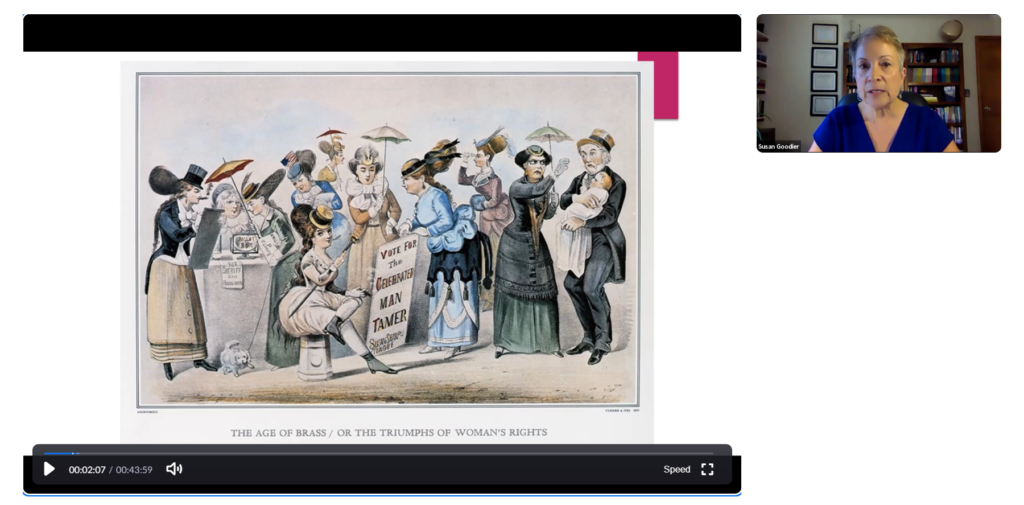Suffrage and anti-suffrage ideas weren’t just expressed through protests and oration; sometimes, activists expressed their thoughts through cartoons.
Susan Goodier, lecturer of history at SUNY Oneonta and member of the Organization of American Historians’ (OAH) Distinguished Lectureship Program, presented a lecture on political cartoons and suffrage activism through Zoom on Aug. 27, along with a Q&A Zoom session on Sept. 23, as part of the Beyond Suffrage lecture series.

Goodier started by showing her favorite piece, titled “Age of Brass/or the Triumphs of Women’s Rights,” which depicts what people thought would happen if women got the right to vote. The piece shows women smoking, showing their legs and being rude to their husbands, among other negative traits.
Cartoons from 1869 up to the 1920s showed imagery similar to that piece, even after women got the right to vote. Those who opposed women’s suffrage feared women would abandon traditional housewife duties if they had the right to vote.
“For many people of the 19th century and early 20th century, it was horrifying to think that women could leave the home and be out in public,” Goodier said.
Many of the cartoons drawn by anti-suffragists showed women outside the home, disrupting society and the typical gender roles. A common theme seen in anti-suffrage cartoons was depicting women who wanted a political role in an unflattering way since they would be running against the then-expectation of women being quiet, gentle and away from the public sphere.
On the other hand, suffragists leveraged the traditional views on women to express themselves in their political cartoons. They often drew women using domestic traits — such as cleaning, cooking and organizing — to clean up politics and the corruption within.
“It’s interesting to see that a number of political cartoons show women in that domestic light,” Goodier said. “It’s like appropriating the domestic capabilities of women and putting them in a positive political light.”
Cartoonists also displayed trains and cars in many political cartoons during the time period. One example shown was a train labeled “Woman Suffrage,” clearing the way of negative ideas society had at the time.
With the passage of the 15th Amendment, which gave voting rights to African American men, suffragists made cartoons depicting it as oppression toward mostly white women, saying it was unacceptable and inappropriate.
With the onset of World War I, political cartoons began looking more militaristic, depicting women as peaceful or as destroyers of war.
At the same time, women in New York were still fighting for the right to vote. Women in the West who were able to vote would hold political parades and would write articles in attempts to get New York women the same opportunities they had.
After New York women were able to vote, most of the suffragists’ energy went to making a federal amendment to grant women suffrage.
During this period, anti-suffrage cartoons depicted suffragists making friends with President Woodrow Wilson, despite him being an anti-suffragist himself. He then changed his perspective, seeing suffragists’ support and activism as an effective war measure.
After the war ended, the Senate agreed to give women the right to vote with the 19th Amendment in 1919.













